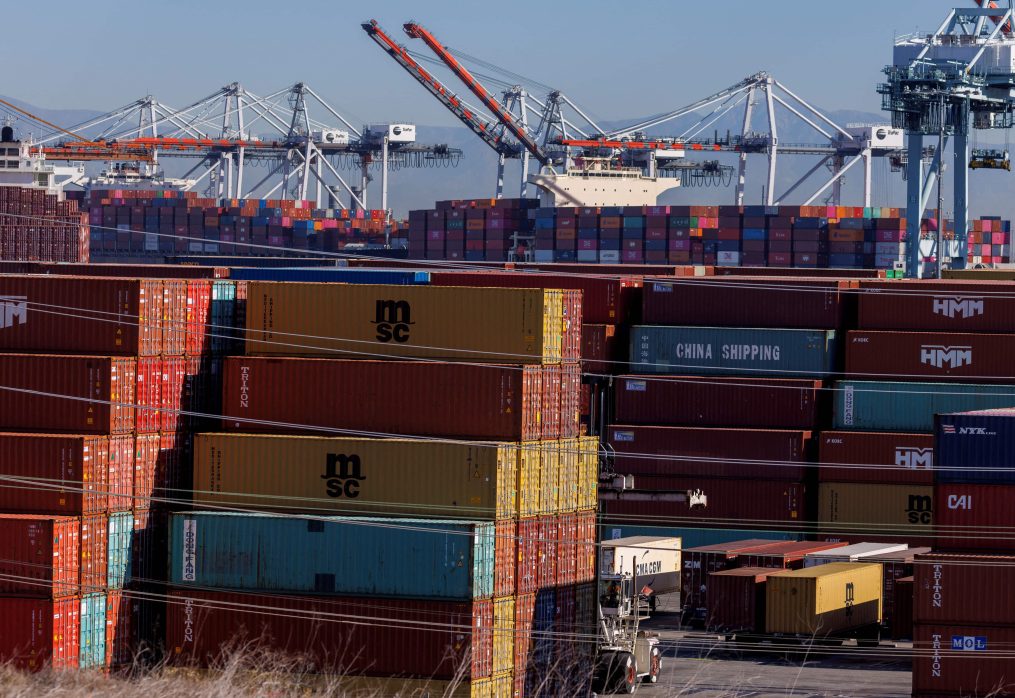India’s shipping ministry wants $1.3 billion over nine years to float PLI scheme for containers
The Indian shipping ministry has significantly jacked up its fund demand for the production-linked incentive (PLI) scheme that it plans to float for encouraging shipping container manufacturing in India to compete with China as a source country for global supplies.
The ministry’s askance, said officials, has been raised to Rs 110 billion ($1.3 billion approx.) with spending spread over nine years. Of these nine years, incentive outlays for the first five years will be fixed while incentive for the last four years will be tapering or in decreasing order.
The ministry’s fund demand is nearly 13 times higher than the budget outlay of Rs 8 billion ($96 million) that the Expenditure Finance Committee had indicated last November based on the limited utility of the scheme for catering to the small domestic market.
Besides rewarding annual increments in manufacturing, officials said the scheme is aimed at bridging the price gap between domestically manufactured and imported containers. Compared to the Indian ones which cost about Rs1,46,000 per box, the Chinese containers cost a paltry Rs 75,000 apiece.
Officials said the higher budget outlay, as suggested by the Indian Institute of Foreign Trade (Kolkata) that was hired for the feasibility study, could help India wean away at least 10 per cent share of demand from global container liners on grounds that most of them are looking at ‘China plus One’ policy for importing goods.
The policy has gained prominence due to global supply chain disruptions during Covid-19 and the recent trade tensions whereby businesses and governments are increasingly aware of the vulnerabilities that arise from relying on a single nation for manufacturing or sourcing essential goods.
India central bank nudges banks to settle UAE trades in Rupee, Dirham
Officials said that by including containers as the 15th sector in the PLI scheme, the ministry hopes to build it as a new indigenous industry. At present, a handful of small domestic producers fail to meet the demand for rail and shipping operators so much so that the country’s largest operator — public sector Container Corporation of India —has its entire fleet from China.
In fact, not just India, almost 90 per cent of global needs for container liners is met by Chinese companies.The global shipping container market size is close to $7 billion and is expected to be more than $12 billion by 2028.
According to officials, the scheme would be open only for containers of size 20 and 40 feet, including standard and high cube containers. It encompasses dry storage, flat rack, open-top and open-side storage containers as well as refrigerated ISO containers.
However, the beneficiary company would only be those that are registered in India as a partnership firm, limited liability partnerships, proprietorship firm and limited company under the Companies Act 2013 or joint ventures that are engaged in end-to-end manufacturing of shipping containers.
In the first year, the PLI scheme would give incentives to match the existing price differential. Therefore, the proposal is to provide support for the cost differential component of container manufacturing, regardless of the level of production, based on two factors: the differential price and the incremental production.
Subsequently, the scheme would reward incremental production. If incremental production targets are unmet in the following year, the company will only be eligible for incentives based on the differential price component and will not receive the incremental production component.
Twelve months before the end of the ninth year, a review shall be carried out by a committee —formed for implementing the scheme — to decide whether the scheme is to be continued in the same form and modalities or not.
The ready availability of containers in time is the key for the sustenance and growth of India’s export industries. In the logistics supply chain, availability and turnaround time of shipping containers affect freight charges for products requiring containers for transportation.
Therefore, to keep the logistic supply chain in efficient and economical manner, the availability of shipping containers at an affordable rate is essential for the Indian export-oriented market.
With price competitiveness, it would help boost the capacity of indigenous container manufacturing facilities in India. Self-reliance, in turn, will ensure the steady supply of shipping containers, even in case of global scarcity or difficult geopolitical scenarios, like the pandemic, regional conflict, trade embargo, etc.
Keeping in view India’s vision of becoming ‘Atmanirbhar’ or self-reliant, PLI schemes for 14 key sectors have been announced with an outlay of Rs. 1.97 lakh crore to enhance India’s manufacturing capabilities and exports.
recommended stories
-
Jungkook’s single Seven accused of plagiarism, BIGHIT Music issues statement
-
Despite Chinese threats, Philippines conducts successful resupply mission to remote outpost in South China Sea
-
Chess World Cup 2023: Praggnanandhaa, Carlsen first game ends in draw despite early dominance from Indian
-
Chandrayaan-3: Why last twenty minutes before soft-landing of Vikram lander will be most crucial
-
Levels of caffeine in blood could affect body fat and diabetes, suggests study
-
Big solar flare incoming? Intriguing black patch on Sun captured by Perseverance Mars rover
-
Taylor Swift concert comes under fire after disabled woman claims no wheelchair access in front row
-
Spotless giraffe, incredibly rare and only one of its kind in world, born at zoo in Tennessee
-
Christopher Nolan’s Oppenheimer becomes top 5 IMAX movies of all time, joins Avengers Endgame, Avatar
-
Rihanna, A$AP Rocky secretly welcome second baby
-
Japanese astronomers expect response from aliens during country’s ‘star festival’
-
Britney Spears throws divorce party after separating from Sam Asghari, shares racy video with shirtless men
-
Rajinikanth’s Jailer creates history at the global box office, crosses the 5 billion mark
-
Indian boy gets stuck in elevator, does homework to stay calm during two-hour ordeal















